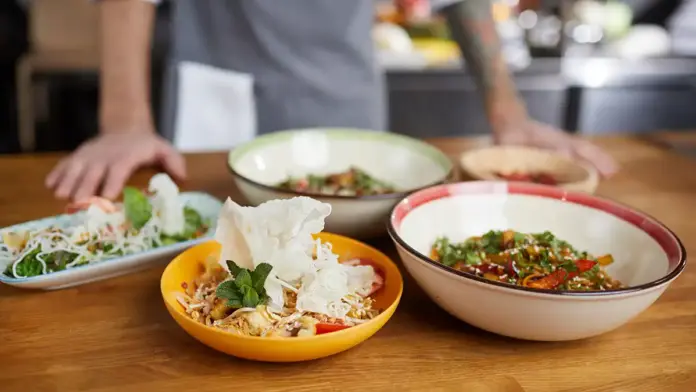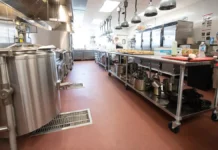
The COVID-19 pandemic brought unprecedented challenges to the restaurant industry, with mandatory shutdowns, social distancing guidelines, and capacity restrictions forcing operators to rapidly adapt to new ways of doing business. As a result, the pandemic accelerated some existing trends and introduced new ones that are likely to outlast the crisis and shape the future of the industry. Here are some of the restaurant and food service trends that will persist beyond the pandemic and what operators can do to capitalize on them.
Changes in Staffing and Operations
The pandemic has forced many restaurants to rethink their staffing and operational models. One trend that is likely to continue is a greater focus on cross-training staff to perform multiple functions. This will help restaurants better cope with fluctuations in demand and reduce labor costs. For example, servers may also be trained to prepare drinks or take orders, while kitchen staff may be trained to clean and sanitize dining areas.
Another trend that will persist is the adoption of technology to streamline operations and reduce contact points between staff and customers. For instance, self-service kiosks and mobile ordering systems will become more prevalent, allowing customers to order and pay without interacting with staff. This will free up staff to focus on tasks that require human interaction, such as food preparation, serving, and customer service.
Using Technology Across More Functions
The pandemic has also accelerated the adoption of technology across multiple functions in restaurants. One trend that will continue is the use of technology to personalize the customer experience. For example, restaurants may use data analytics to track customer preferences and recommend menu items based on their past orders. They may also use chatbots or AI-powered assistants to interact with customers and provide recommendations or answer questions.
Handling Takeout and Off-Premise Orders
The pandemic has also led to a surge in takeout and off-premise orders, which has forced restaurants to adopt new strategies to meet customer demand. One trend that will continue is the use of ghost kitchens or virtual restaurants to expand their delivery and takeout capabilities. These kitchens operate solely for delivery or takeout, allowing restaurants to cater to customers who prefer to dine at home.
Without a doubt, contactless delivery and pickup options are one of the driving forces changing the food service format for many businesses. For instance, some restaurants have started using lockers or automated vending machines to allow customers to pick up their orders without interacting with staff. They may also use drones or robots for delivery, reducing the need for human interaction and minimizing the risk of transmission.
New Ways of Imagining Menus and What to Put on Them
The pandemic has disrupted the traditional restaurant menu, with operators adapting to new consumer behaviors and preferences. One trend that will persist is a greater focus on locally-sourced and sustainable ingredients, as customers become more aware of the environmental impact of their food choices. Plant-based options and alternative proteins will also continue to gain popularity, as more people adopt a flexitarian or vegetarian diet.
The use of technology to personalize menus and make ordering more efficient has also become a mainstay for the industry. For instance, some restaurants have started using digital menu boards that display different items based on the time of day or the weather. They may also use AI-powered recommendations to suggest menu items based on a customer’s past orders or dietary preferences.
Real Estate Footprint Sizes Have Changed Forever
The pandemic has also had a significant impact on the real estate footprint of restaurants. With capacity restrictions and social distancing guidelines, many operators have had to reduce the size of their dining areas or shift to off-premise models. One trend that will persist is a greater focus on outdoor dining, with more restaurants adding patio or sidewalk seating to their spaces. This will create a more inviting atmosphere for customers and help operators make up for lost revenue from indoor dining.
How Restaurants Adapted and Continue to Reassure Customers of Hygiene and Safety
The pandemic has brought hygiene and safety to the forefront of customers’ minds, with many operators implementing new protocols to protect both customers and staff. One trend that will persist is the use of contactless payment and ordering systems, which reduce the need for physical interaction between customers and staff. Restaurants may also use touchless faucets and soap dispensers to reduce the spread of germs.
Enhanced cleaning and sanitization procedures are also likely to stay in some cases. Operators may use UV-C light technology to disinfect surfaces and equipment or implement frequent hand washing and sanitizing protocols for staff. They may also adopt transparent cleaning schedules and protocols to reassure customers of their commitment to hygiene and safety.
Changes That Will Come to Chains and Franchises
The pandemic has also had a significant impact on chains and franchises, with some struggling to adapt to new consumer behaviors and preferences. One trend that will persist is a greater focus on local sourcing and menu customization, as customers become more interested in unique and personalized dining experiences. Chains and franchises may also adopt new technologies and off-premise models to better serve their customers.
The food service industry is also placing greater emphasis on the customer experience, with chains and franchises investing in training programs and employee retention initiatives to improve customer service. They may also use customer data and feedback to personalize menus and marketing messages, creating a more engaging and memorable experience for customers.
Stay Current With Food Service Trends by Subscribing to Total Food Service
Keeping up with the latest trends in the restaurant industry can be challenging, but it is essential for operators who want to stay ahead of the curve. Total Food Service is a leading industry publication that covers the latest news, trends, and insights in the food service industry. Subscribe to Total Food Service to stay informed about new technologies, menu trends, and industry developments, and gain that competitive edge in the post-pandemic world.
























